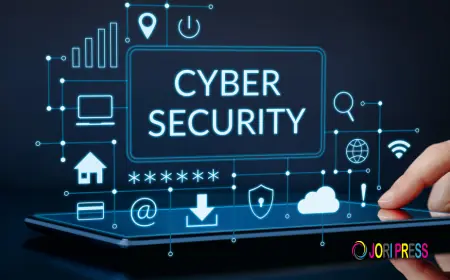How to Modernize Legacy Server Infrastructure in the UAE
Across the UAE, businesses are under increasing pressure to innovate, scale, and remain competitive in fast-paced markets. Yet many organizations—especially SMEs and mid-size enterprises—continue to rely on aging, legacy server infrastructure. These outdated systems are often slow, inefficient, and difficult to maintain, leading to higher operational costs, increased downtime, and heightened security risks. In a region like the UAE, where digital transformation is being driven at both the government and enterprise level, modernizing legacy server infrastructure is not a luxury—it’s a necessity.
Looking for Genuine Apple Products in Dubai? Find Them All in One Place!
Why UAE Businesses Must Act Now
The UAE government’s push for digital excellence through initiatives like Smart Dubai and UAE Vision 2031 puts technology adoption at the center of economic growth. Businesses that lag in upgrading their IT environments risk losing ground to more agile competitors. Legacy systems are also ill-equipped to handle modern applications, cloud integration, or regulatory compliance requirements like the UAE’s Personal Data Protection Law (PDPL).
Furthermore, older servers tend to consume more power, produce more heat, and take up more space in data centers—contributing to inefficiencies that impact both cost and sustainability goals. Modern server infrastructure, in contrast, offers improved performance, energy efficiency, remote management capabilities, and built-in security.
Evaluating Your Existing Infrastructure
The first step in modernization is a thorough assessment of your current server environment. UAE businesses should conduct a full audit of hardware age, system performance, maintenance history, and compatibility with current business applications. This step helps determine which servers can be upgraded, which need replacement, and where opportunities exist for consolidation.
IT teams should also evaluate workloads—whether running on physical servers, virtual machines, or legacy operating systems—to identify bottlenecks and inefficiencies. Many older servers were not designed to support today's data-heavy workloads, hybrid cloud environments, or advanced cybersecurity protocols. Once a baseline is established, it becomes easier to prioritize modernization efforts based on risk, ROI, and operational impact.
Choosing the Right Server Architecture for Your Needs
One of the key decisions UAE businesses face when modernizing is whether to stick with on-premise solutions, migrate to the cloud, or adopt a hybrid model. Each option has benefits depending on the business type, industry, and compliance requirements.
Modern Dell PowerEdge servers, for example, provide a flexible on-premise solution that supports high performance and virtualization with reduced energy consumption. They’re ideal for organizations that require local data processing, such as those in healthcare, legal, or financial services, where data sovereignty is a concern.
On the other hand, businesses looking to scale quickly may benefit from hybrid infrastructure—using on-premise servers for core applications and integrating with public cloud platforms for storage or backup. Dell’s integration with VMware and Microsoft Azure Stack makes this transition seamless and manageable. In either case, selecting a future-ready server architecture ensures your infrastructure remains adaptable as needs evolve.
Improving Performance Through Virtualization and Consolidation
One of the most cost-effective modernization strategies is server consolidation through virtualization. Rather than running a single application on a dedicated physical server, virtualization allows multiple applications or workloads to run on a single machine. This not only reduces the number of physical servers needed but also lowers power, cooling, and maintenance costs.
Dell servers are optimized for virtualization environments and can handle multiple virtual machines without compromising performance. UAE businesses can leverage this capability to reduce hardware sprawl, improve disaster recovery, and create more agile IT operations.
Your Trusted Destination for Apple Products in Dubai—Explore Now!
Ensuring Business Continuity with Backup and Redundancy
Modernizing server infrastructure also means building resilience into the system. Legacy servers often lack proper redundancy and backup mechanisms, making them vulnerable to outages and data loss. With new servers, businesses can implement RAID configurations, hot-swappable drives, and redundant power supplies.
Additionally, modern server platforms integrate seamlessly with Dell EMC backup solutions, allowing businesses in the UAE to create automated backup routines, disaster recovery plans, and off-site replication. This ensures that data remains safe and recoverable even in the event of cyberattacks, hardware failure, or unforeseen disruptions.
Security-First Modernization
With the increase in cyber threats and stricter compliance regulations like the UAE’s PDPL, security must be a core part of any modernization plan. Legacy servers often lack the firmware protections and secure boot capabilities found in modern systems.
Dell PowerEdge servers, for instance, are designed with built-in security at every layer—from silicon-based root of trust to end-to-end encryption. They offer secure BIOS, role-based access control, and real-time threat monitoring. By replacing outdated systems with modern, secure infrastructure, UAE businesses can better protect sensitive data and ensure compliance with local laws.
Reducing Operational Overhead with Remote Management
Another key advantage of modern server infrastructure is improved manageability. With legacy systems, even routine tasks like updates and performance monitoring can be time-consuming. Modern Dell servers come with tools like iDRAC (Integrated Dell Remote Access Controller), which allow IT teams to monitor, troubleshoot, and manage servers remotely.
This is especially valuable for UAE businesses with distributed teams or multiple offices across the Emirates. It reduces the need for on-site intervention, cuts travel costs, and minimizes downtime—leading to smoother and more cost-efficient operations.
Partnering with ACS-DXB for a Smooth Transition
Modernizing server infrastructure can be a complex process, especially for businesses without in-house IT expertise. That’s where ACS-DXB comes in. As a leading Dell partner in the UAE, ACS-DXB specializes in helping businesses assess, plan, and implement server upgrades tailored to their needs.
From infrastructure audits and Dell product recommendations to on-site deployment and post-installation support, ACS-DXB offers end-to-end consulting. Their team ensures minimal disruption during the transition and maximum performance after implementation. Whether you’re an SME looking to virtualize your servers or an enterprise migrating to a hybrid setup, ACS-DXB provides the strategic guidance to do it right.
If you are searching for a Visit to the Latest Apple Products in Dubai , you can connect with Atop Computer Solution LLC.
Conclusion: Future-Proof Your Business Today
Modernizing your legacy server infrastructure is no longer optional in the UAE’s fast-moving business environment. With the right strategy, tools, and partner, it becomes an opportunity to improve performance, reduce costs, enhance security, and future-proof operations. Dell’s modern server solutions, combined with ACS-DXB’s regional expertise, make the transformation seamless and impactful.
For businesses aiming to align with the UAE’s digital transformation goals, now is the time to leave behind outdated systems and step confidently into the future with a modern, secure, and scalable IT foundation.
Tags:
What's Your Reaction?
 Like
0
Like
0
 Dislike
0
Dislike
0
 Love
0
Love
0
 Funny
0
Funny
0
 Angry
0
Angry
0
 Sad
0
Sad
0
 Wow
0
Wow
0



















































